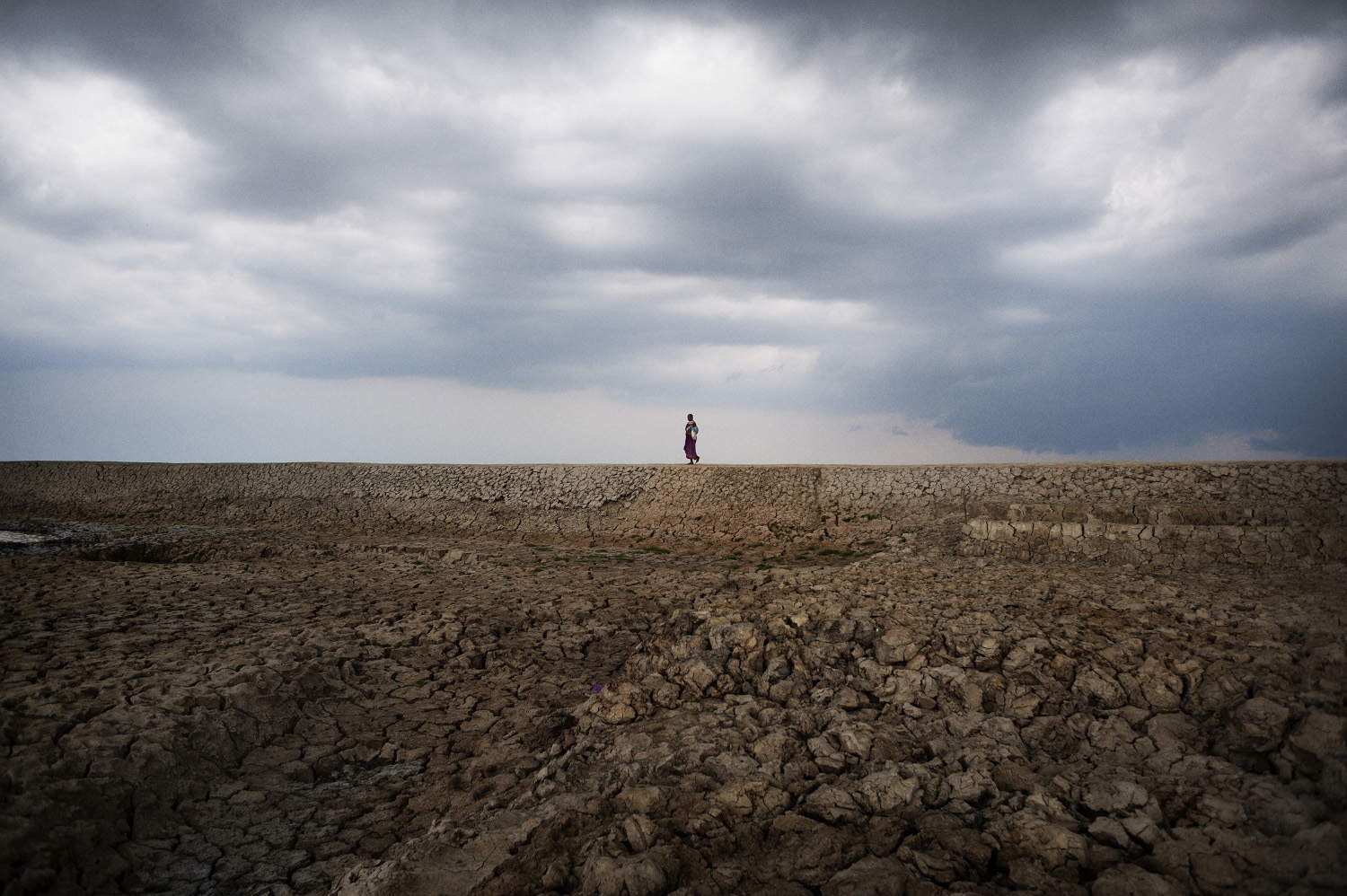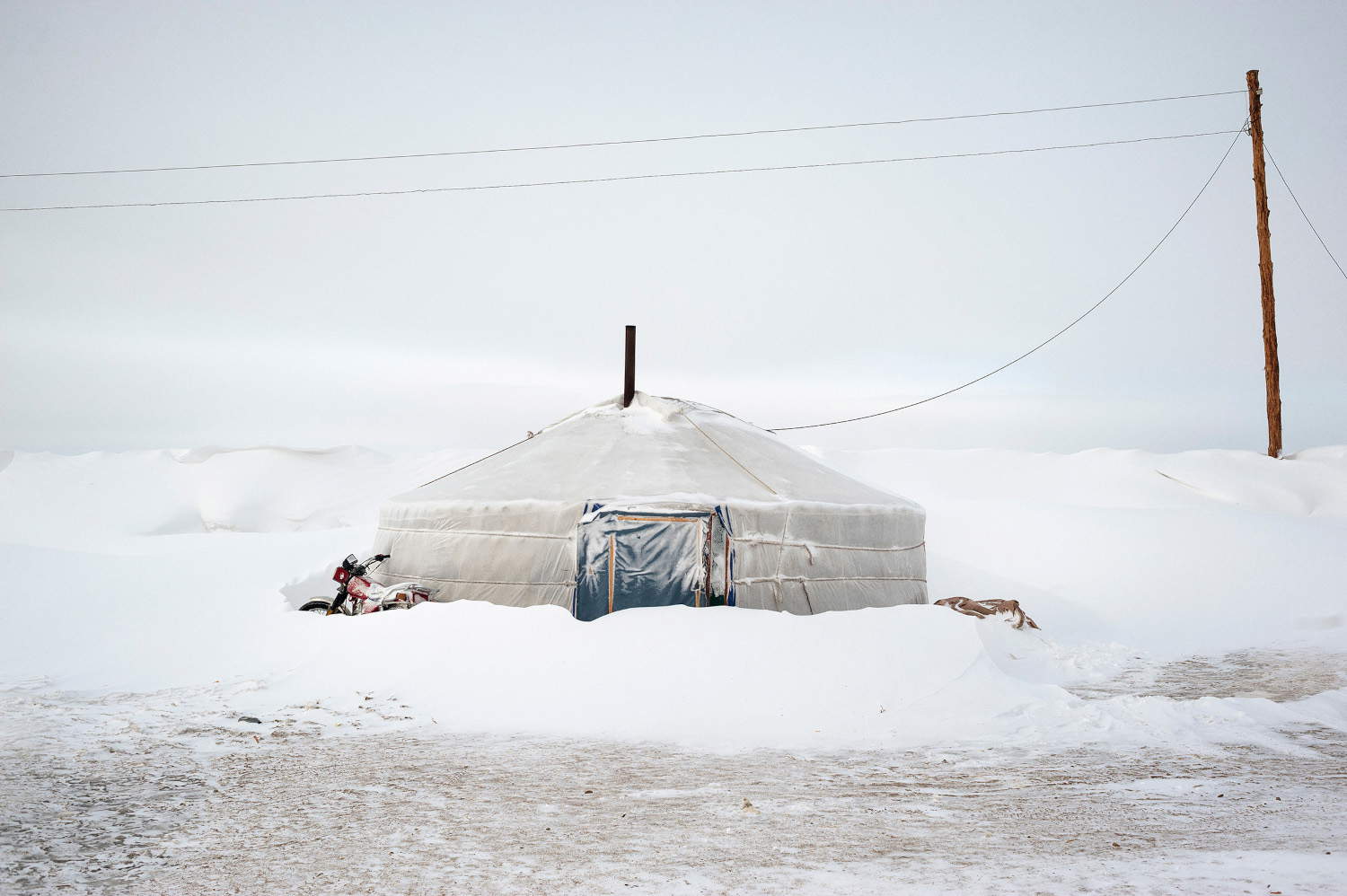Climate migration through the shots of Alessandro Grassani. On display at the Diocesan Museum in Milan
From February 18 to April 27, 2025, the Carlo Maria Martini Diocesan Museum in Milan will host the photography exhibition Alessandro Grassani. Climate Emergency. A Journey to the Edge of the World, curated by Denis Curti. Through about forty shots divided into different chapters, the exhibition aims to explore the phenomenon of climate migration, highlighting how environmental changes are radically altering the lives of entire communities, forcing them to move due to unsustainable conditions.
From glacial temperatures in Mongolia to extreme drought in Kenya to flooding and rising sea levels in Bangladesh and Haiti, Grassani recounts in images a near future in which humanity struggles to find places to survive global warming. With a direct and empathetic visual language, the photographer bears witness to the hardships of people caught up in these crises.
The protagonists of his shots are herders, farmers and fishermen, exhausted by adverse environmental conditions and forced to leave their lands and move to cities, often without finding the resources and prospects they hoped for. Among the stories documented is that of Erdene Tuya, 29, originally from Mongolia, whose family has lost most of its livestock in recent years due to extremely harsh winters that have touched temperatures as low as -50 degrees Celsius. Grassani captures their despair, showing the carcasses of the animals and the context of hardship in which the herders survive, searching for the means to move to milder climates as soon as possible.
In Kenya, however, the situation is the opposite: aridity drives entire communities to migrate. According to the Internal Displacement Monitoring Centre, some 1.7 million people left their homes between 2008 and 2022, fleeing that 80 percent of Kenyan territory classified as arid or semi-arid. Among them is Rose Juma, 34, who with her husband left the village of Amagoru to escape tribal conflicts sparked by the struggle for control of water and fertile land.
In Haiti, people face increasing hurricane violence, devastating rains and flooding exacerbated by massive deforestation. Nadie Preval, 28, lives in extreme poverty in a shack in Port-au-Prince with her daughter and husband. Once farmers, they have had to sell off their land, now unproductive due to changing climatic conditions.
A similar fate befalls Bangladesh, where each year more than 300,000 people flee the waterlogged countryside affected by sea rise and salinization. Their main destination is Dhaka, one of the fastest growing cities in the world, with a population that has already reached 20 million. Through his shots, Grassani shows overpopulation, poverty and the unreal interpenetration between nature and the city.

“I looked at Alessandro’s photographs,” said curator Denis Curti, “with a strong environmentalist bent.... and I must say that, immediately, I shifted my attention to something else. From documentary expectation to ’humanist’ surprise. Alexander moves like a contemporary shaman. His talisman is the camera. And his is a restless exercise within a world that appears upside down. The climate emergency lives inside and outside each of us.”
“The exhibition is meant to be a partial but necessary response to Pope Francis’ call to engage in raising awareness of a sensitive issue of common concern, which does not only involve distant peoples, but affects each of us,” said Nadia Righi, director of the Diocesan Museum of Milan. “Through Alessandro Grassani’s photographs we give voice to people who suffer amid general indifference, the same indifference that too often shrouds the issue of climate change, so as to stimulate through art awareness of one of the greatest contemporary global threats, and active participation in countering it.”
The exhibition is made possible thanks to the support of the Grana Padano Foundation.

 |
| Climate migration through the shots of Alessandro Grassani. On display at the Diocesan Museum in Milan |
Warning: the translation into English of the original Italian article was created using automatic tools. We undertake to review all articles, but we do not guarantee the total absence of inaccuracies in the translation due to the program. You can find the original by clicking on the ITA button. If you find any mistake,please contact us.




























